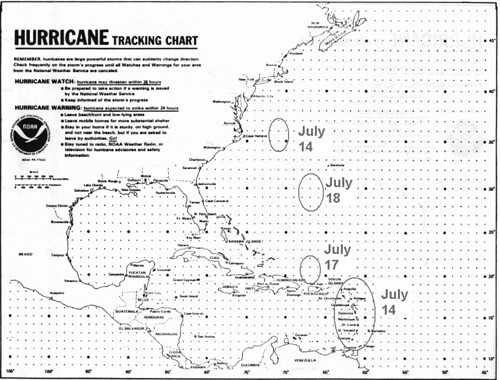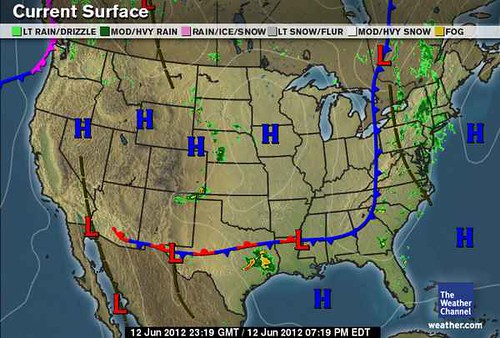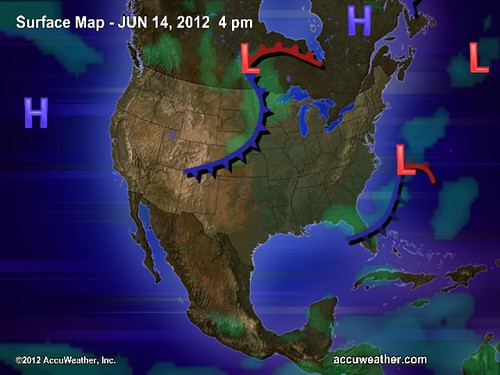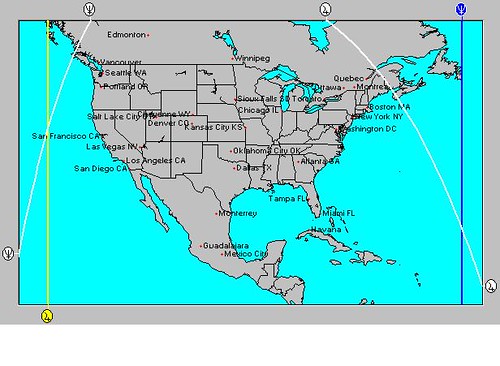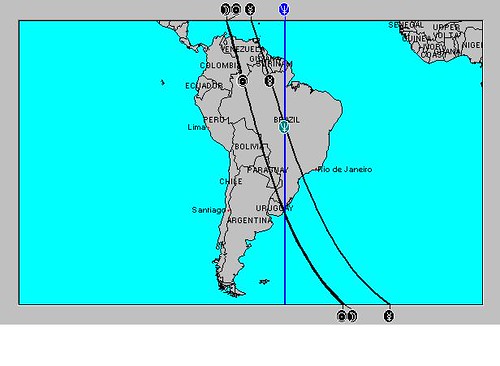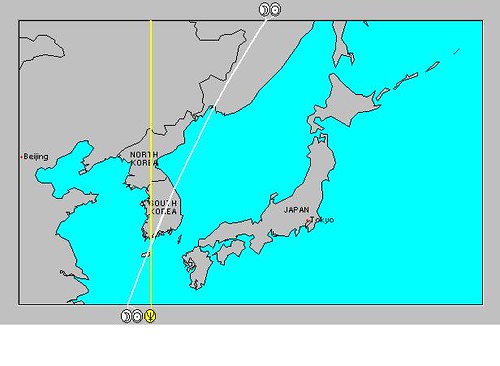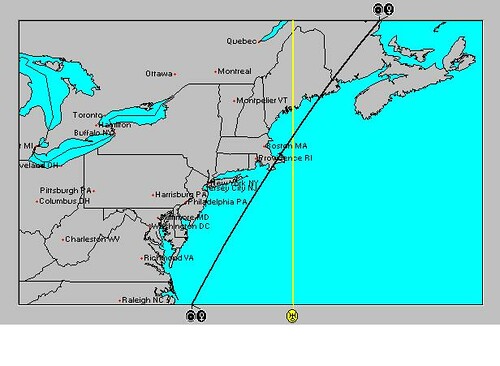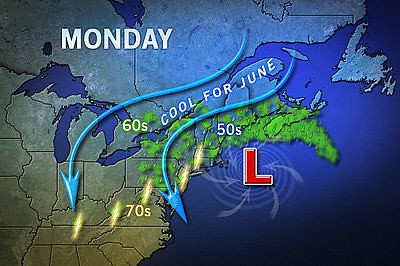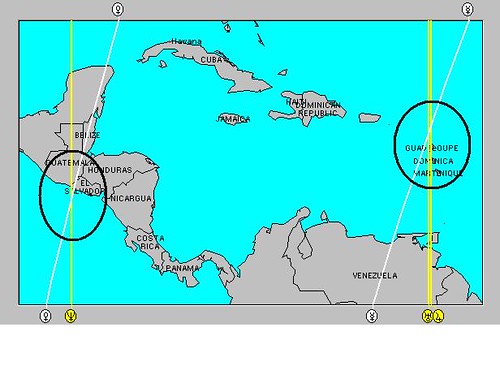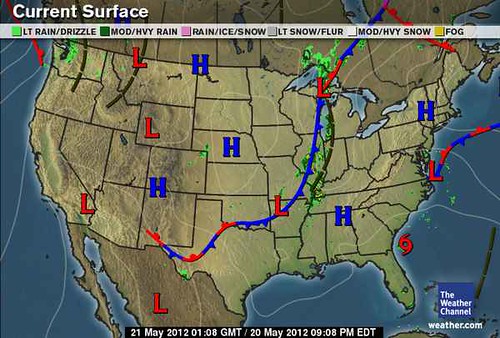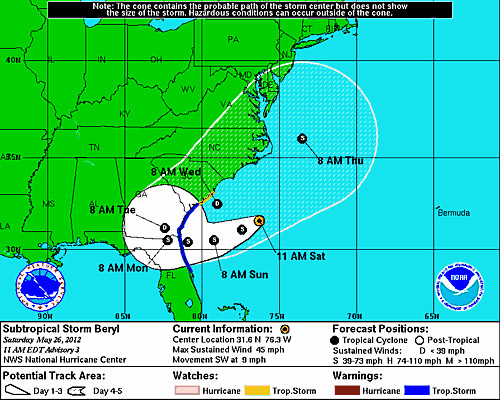
On July 21st, I posted some forecasts for the London Olympics. Here are the results.
Forecast
July 27-29: These days seem to indicate a windy weather pattern. There are a number of indications of a warm, southerly air flow indicating warm or hot temps. It's not clear how much precipitation is involved. A low or front may set up off the east coast of England.
Results:
27th: Dry for most, though showers in the east. Feeling cooler.
29th: Sunny spells and showers, some heavy. Breezy and rather cool.
The following map is for the 28th and shows the cold front off the east coast of England as mentioned in the forecast. (All in all not a bad forecast. There was some wind, sun, precipitation, and the front off the coast.)

Forecast
July 31: Cool, dry weather
Results
31st: A mostly cloudy day. Rain at times this morning but also some drier interludes.
Forecast
August 2: Fair
Results
2nd: Dry for much of the morning with bright or sunny spells. Afternoon showers, mainly dry night.
Forecast
August 3: Increasing moisture brings a chance of rain.
Results
3rd: Dry start with sunny spells but showers will develop, especially from late morning, with some of them likely to be heavy for a time before easing during the afternoon. (Pretty good forecast.)
Forecast
August 4: Southerly winds, rising temperatures.
Results
4th: Some sunny intervals but also showers
Forecast
August 5: Fair conditions.
Results
5th: Further showers are expected, locally heavy at times. (Not good!)
Forecast
August 6-9: Breezy to windy, warm, dry conditions.
Results
6th: Tonight, becoming mainly dry
8th: Dry and warm with sunny spells.
9th: Dry with some warm sunshine inland
10th: Becoming breezy (Good one!)
Forecast
August 10-12: Southerly winds, warm temperatures, moderate humidity.
Results
10th: Continuing sunny and very warm.
11th: Mostly fine on Sunday.
12th: Increasingly cloudy with outbreaks of rain during Monday afternoon. (Not bad except for the last day.)
Fall Weather 2012: Central U.S.
Fall Weather 2012: The U.S. West Coast
More On Texas Rain 2012
Mars Conjunct Saturn August 15, 2012
Jupiter-Neptune and Heavy Rain
The Solar Eclipse of November 13, 2012
Long-range effects of the May 20, 2012 Solar Eclipse
Long-range effects of the May 20, 2012 Solar Eclipse Part 2
Hurricane Season 2011 Forecast Results
Hurricane Risk-Management
Texas Summer 2012
New Weather Alternative Website
Overview of UK Winter 2012-13
The Winters of 2011-14
Fulfilled Long-range Forecasts for Hurricane Season 2010
Introduction to the Weather Alternative
Astrology and Predictions
An excerpt from Astrology News Service's interview with Nina Gryphon. Read the whole interview here.
ANS: You have a law degree. If you were to defend astrological truth claims in a court of law what might your best legal arguments be?
Gryphon: Any lawyer or politician will tell you that to win an argument one must be in control of definitions. The naming of things defines our reality, and thus contains great power. The first task, then, is to define “astrology” in such a way that gives us a chance defending its truth before an imagined objective court. So I would exclude from our definition astrology packaged as entertainment, such as mass media astrology columns. While these predictions may be entertaining, I would not be prepared to defend their accuracy in a court of law.
A working definition of astrology for our case could be: “A means of using celestial bodies to forecast future events.” If we can convince our judge to use our definition, and prove that astrology can perform according to its definition, then we will have won. If astrology can do better at predicting than its mainstream equivalent, this would be an added bonus.
Of course, astrology can be used for much more than just prediction, but predictions are easy to verify. So, our argument would rest upon being able to show that astrology is right a certain percentage of the time in a relatively unambiguous field, such as weather forecasting. Astro-meteorology has an illustrious history, with practitioners as well known as Tycho Brahe and Johannes Kepler. And there are many fine astro-meteorologists carrying on their work today. The added benefit of predicting the weather is that we can compare astrologers’ results with those of mainstream meteorologists. If astrology does better than the meteorologists, which I believe would be the case given the skilled practitioners, astrology would stand alone among the sciences. In either case, a world-view revision would be in order.










